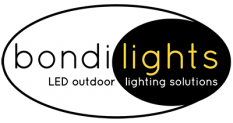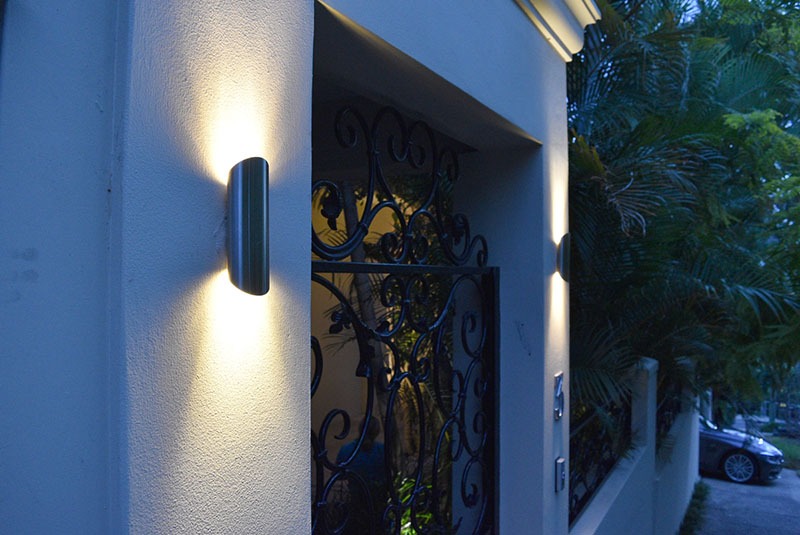Before falling in love with a fixture’s aesthetics, it’s smart to clarify exactly what job your lighting needs to do. That’s the starting point for choosing the right LED wall lights—form always follows function.
If you need serious security lighting for driveways, dark side yards, or rear entrances, you’re not shopping for decorative accents; you’re looking for LED utility wall packs. These fixtures are engineered to deliver bright, wide coverage—typically 700 to 1,400 lumens or more—to keep large outdoor areas safely illuminated and highly visible.
The problem isn’t just the initial corrosion
In coastal Australia, the combination of salt spray, intense UV radiation, and humidity creates a perfect storm for metal degradation. When it rains or when morning dew settles, water sits on your fixtures. Then the sun comes out, evaporates that water, and essentially bakes the salt directly onto the metal. This happens day after day, slowly destroying anything that isn’t specifically built to handle it.
For homeowners who’ve invested significantly in their coastal properties, having your outdoor lighting fail repeatedly feels like throwing money down the drain. Because that’s essentially what you’re doing.
Marine-grade materials are the only option
Not all metals are created equal when it comes to withstanding coastal conditions:
Marine-Grade Stainless Steel (316 Grade)
You’ve probably heard of stainless steel, but there’s a specific type that’s designed for marine environments. Grade 316 stainless steel contains molybdenum, which provides extra protection against the pitting and corrosion that saltwater causes. It’s the same material used in boat fittings and offshore structures.
The aesthetic is clean and modern, which suits contemporary coastal architecture beautifully. While it’s not completely maintenance-free (you’ll occasionally notice “tea staining,” which is a surface discolouration that happens in high-salt environments), most manufacturers often add an electroplated coating to minimise this issue, and a periodic wipe-down keeps things looking fresh.
Solid Brass and Copper
If you’re looking for something that truly stands up to coastal conditions with minimal fuss, solid brass and copper are your best bets. These materials develop a natural patina over time, which is actually a protective coating that seals the metal underneath, preventing further degradation.
The metal creates its own shield, as once that patina forms, you can basically forget about maintenance while the fixture continues doing its job for decades.
What do IP Ratings mean?
IP ratings on outdoor products tell you how well a fixture is sealed against dust and water. In coastal environments, this is absolutely critical.
The first number is about solid particles (like dust), and the second is about liquid. For coastal homes, you want a minimum of IP65. The “6” means completely dust-tight, and the “5” means the fixture can handle water jets from any direction. Considering how wind can drive salt spray into every conceivable crack and crevice, this level of protection is essential.
For properties right on the waterfront, IP68-rated fixtures offer even more protection. These are technically waterproof and can handle being submerged, which means storm surges and heavy rain won’t phase them.
The Up & Down difference
LED Up & Down wall lights combine aesthetics and function. These fixtures cast light both upward and downward along your wall, creating what lighting designers call “wall washing.” This technique highlights the texture of your home’s exterior, whether it’s natural stone, timber cladding, or rendered brick. The interplay of light and shadow adds depth and drama that a standard downlight just can’t achieve.
For modern coastal homes, especially in areas like Bondi where architecture tends toward clean lines and indoor-outdoor flow, Up & Down lights integrate seamlessly. They become part of the architectural language of your home, enhancing its design rather than distracting from it.
There’s also an environmental consideration. Quality Up & Down lights are designed with full cut-off shields, meaning light goes where you want it (along your wall) and not into the sky or across the beach. This matters more than you might think. Light pollution affects nocturnal wildlife, including coastal birds and marine species. By choosing fixtures that direct light responsibly, you’re maintaining security and ambience while being a better neighbour to the local ecosystem.
The financial reality of LED
The upfront cost of quality marine-grade LED fixtures can seem steep. But when you run the numbers, the investment makes complete sense.
Traditional halogen bulbs typically use 40-60 watts to produce decent light. An equivalent LED might use less than 10 watts. That’s up to 80% less energy consumption. For context, replacing ten halogen bulbs with LEDs in an average Australian home saves more than $650 over ten years just on electricity bills. The payback period is often under a year.
Another saving comes from not having to replace fixtures constantly. Incandescent bulbs last about 1,000 hours. Halogens might give you 2,000-5,000 hours. Quality LEDs? Try 30,000-50,000 hours. That’s potentially 15 years of typical nighttime use.
Consider where these fixtures usually go (above doorways, on second-story walls, along balconies). When a halogen bulb dies, you’re dragging out a ladder or calling an electrician. With LEDs, you’re reducing replacement frequency by up to 25 times.
Making the right outdoor lighting installation choice
Successfully lighting a coastal property requires moving beyond the mindset of “outdoor lights are all pretty much the same.” They’re not. What works inland will fail at the coast, and what works at the coast for a year might not survive five years without proper engineering.
At Bondilights, we have been designing and manufacturing locally since 2002, so we understand these requirements intimately. We’re not importing generic fixtures and hoping they’ll work in our conditions; we’re engineered specifically for the harsh realities of Australian coastal environments. Our 10-year corrosion warranties on marine-grade materials reflect genuine confidence in the products, so view our range today nd make the smart lighting choice with Bondilights.

